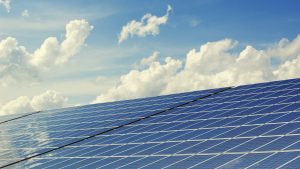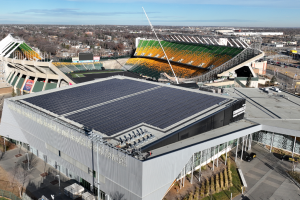Elon Musk turned the residential solar power industry on its ear three years ago when he announced Tesla’s breakthrough solar roof tiles. Thousands of homeowners across North American put down $1,000 deposits for a unique system that cleverly disguised its solar cells under a near shatter-proof glass tile that looked like a normal shingle.
However, like many things Tesla, there has been a continuous string of delivery delays. More and more industry pundits wonder if Tesla’s system will ever reach full production.
Several reasons have been cited. Some surround the attention Musk and his company have been forced to place on electric vehicle (EV) production and sales, diverting the company’s dwindling financial resources away from rooftops and down to the curb side. Although Tesla’s automobile production has ramped up in recent quarters, the effort to meet market and investor expectations has resulted in a hemorrhaging of cash. It’s worth noting that Tesla has never reported anything close to a quarterly or annual profit.
Another reason is Musk’s continual tweaking of the solar panel system itself to improve overall solar efficiency. Version 3, announced earlier this year, still awaits full UL approval.
The number of complete installations is surprisingly low. According to Reuters, Tesla had fully installed only 21 rooftop systems as of February 2019, a far cry from original expectations. As a result, Tesla’s highly publicized Gigafactory 2 near Buffalo, N.Y., built in partnership with Panasonic, has shifted production of its solar cells to other PV array manufacturers, some reportedly in the Far East. Tesla also dropped its door-to-door sales technique and cancelled its sales kiosk agreement with Home Depot in the United States.
Tesla entered the solar power market with a bang in October 2016 when it purchased major U.S. installer SolarCity for $2.6 billion. This gave Tesla entry to the traditional PV array business as well as a platform to market its popular PowerWall storage system. SolarCity continues with its previous business of leasing of third-party solar power generation systems for homes and industry, as well as vehicle chargers.
The novelty factor associated with Tesla’s solar tile rooftop system has worn thin along with the credibility of Tesla’s previous promises, contributing to a 65 per cent decline in the company’s overall solar installations (measured by megawatts) reported in Q2 2019 . Yet Musk continues to be optimistic, tweeting in July that the company was, “Spooling up production line rapidly. Hoping to manufacture ≈1000 solar roofs/week by end this year.”
However, while manufacturing is one thing, installation is another. Given the many unresolved issues concerning installation training for the Tesla system, skepticism about Musk’s latest promises remains.
In the meantime, Tesla has been joined in the marketplace by other solar rooftop systems that disguise their appearance. Notably, 3 IN 1 Roof Inc. based in Deerfield, Fla., announced that its systems had successfully passed UL1703 safety testing, giving it a leg up on Tesla. 3 IN 1 ROOF’s 50-watt solar modules are securely recessed into each of their insulated foam block tiles so they can withstand +200 mph (Cat 5) sustained winds. The system also allows solar modules to be replaced without disturbing the tiles as cell technology improves.
Disappointment over Tesla’s delivery issues coincides with the near complete disappearance of government installation grants and power generation subsidies in Canada. The financial benefit of installing small scale solar systems of any type, especially relatively expensive systems like Tesla’s, must now be calculated on a simple cost-return basis.
This decline in government support, plus the scaling inefficiencies associated with individual home installations, has in turn resulted in reduced interest in small scale systems. Attention is shifting to solar systems on the rooftops of larger commercial and institutional buildings. Due to improved economies of scale, the capital payback periods and direct energy savings are improved, as evidenced in recent high-profile installations across the country.
John Bleasby is a Coldwater, Ont. based freelance writer. Send comments and Inside Innovation column ideas to editor@dailycommercialnews.com.











Recent Comments
comments for this post are closed